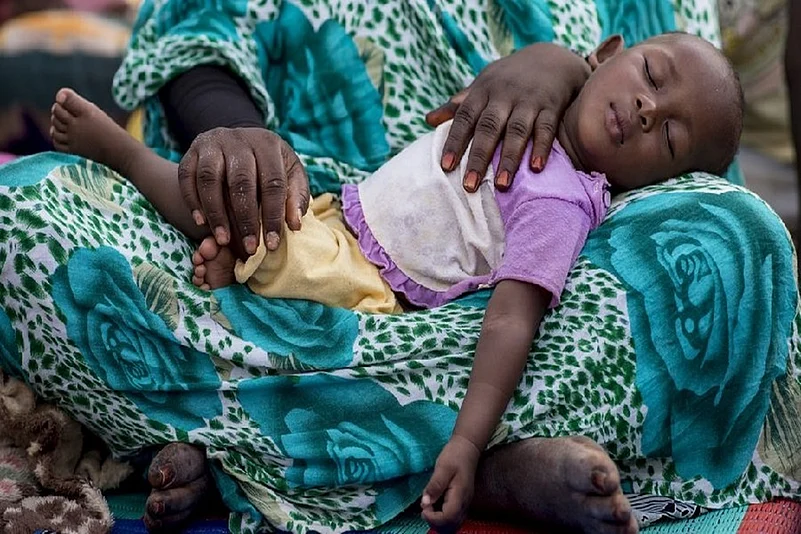A healthy woman nourishes three generations of a family, two by giving birth to healthy children, and healthy grand-children thereafter, and the earlier generation through her enhanced capability of taking care of others.
Unfortunately, India does not fare well in the nutrition scene despite adequate progress in other fields. The state of malnutrition encountered in childhood continues through the secondary growth spurt during adolescence, compromising the health of young women and lowering their capacity for a reproductive role later. Chronic energy malnutrition, protein deficiencies, and micronutrient malnutrition can be seen throughout, coupled with rising cases of overweight and obesity.
It is important to break this cycle of undernutrition during adolescence so that the young girls are healthy for the mother’s role. This calls for a multi-sectoral approach, the significant ones being creating awareness through education on healthy eating, and providing adequate nutrition through healthy diets and supplements to take care of specific nutritional requirements.
Advertisement
The nutritional status of adolescent girls and their preparedness for future motherhood needs special attention. It is a critical time for young women to build a foundation for successful reproduction and healthy adulthood later. Young women must have good nutrition as they enter adulthood, in order to strong and healthy throughout their child-bearing years and into old age. Good nutrition is especially important for adolescent girls to meet future needs of pregnancy and breastfeeding. Adolescence is also the time that the skeletal system builds its strong foundation of calcium stores. If the calcium stores in the bones are insufficient while entering the reproductive years, the bones become weak with successive pregnancies, leading to fractures and disability in later years. Because of the demands of growth, as well as blood loss with menstruation, the requirement for iron among adolescent girls is also very high. Good sources of protein are dairy products, legumes and nuts, which are also important for growth and maintenance of muscle. Energy needs of adolescents are influenced by activity level, basal metabolic rate, and increased requirements to support pubertal growth and development. Hence, adolescent girls need to eat healthy.
Advertisement
A brief on healthy diets
The diet for adolescent girls thus needs to be adequate in terms of all nutrients and should include whole grains and legumes as staples to provide adequate energy, protein and other nutrients too. Inclusion of millets is ideal as they are nutritionally superior. In addition, 4-5 servings of vegetables and fruits to provide essential vitamins, minerals and dietary fibre, 2-3 servings of dairy products to provide good quality protein, and a limited amount of healthy fats and oils to take care of protein and energy requirements are needed. It is important for girls to increase their consumption of foods rich in iron, vitamin C and calcium.
Micronutrient malnutrition - Addressing specific deficiencies, specifically iron deficiency anaemia in this age is crucial. Some practical tips for tackling anaemia are :- Inclusion of raw greens/fruits in diet; avoiding tea and coffee with meals; consumption of gooseberry in any form; using germinated and fermented foods; using foods fortified with iron and/or other micronutrients as feasible.
Nutritional literacy and adequate healthcare – Education empowers women. Adolescents too need appropriate education to understand the importance of being healthy, consuming healthy diets, and to take care of themselves. Appropriate awareness can bring positive changes in food behaviour directed at limiting junk food intake and develop healthy food habits. This can be a part of school education or welfare programs for adolescent girls.
Advertisement
According to available data from the National Family Health Survey 5, about one third of Indian children below the age of five are stunted. Malnutrition is the primary cause of stunting. A World Bank study found that 1 per cent loss in adult height due to childhood stunting is associated with 1.4 per cent loss in economic productivity. It is estimated that stunted children earn 20 per cent less as adults.
Furthermore, many experts have opined that the pandemic has completely disrupted ongoing child welfare activities which has further impacted child nutrition. Unfortunately, the allocation for the Ministry of Women and Child Development (MoWCD ) saw a sharp decline of 18.5% in the Union Budget 2021-22, from Rs 30,007.10 crores for the fiscal year 2020-21 to Rs 24,435 crore for the FY 2021-22. This will further aggravate the malnutrition crisis, especially among women and children as they are the worst affected in any type of crisis.
Advertisement
It is critical for India to fight malnutrition for a healthier next generation. In this context what comes to my mind are the efforts of The Akshaya Patra Foundation which has the largest mid-day meal programme in the world, feeding 1.8 million school going children, every schoolday as of March 2020. I am sure with initiatives like these and government support, together we can address the malaise of ‘hidden hunger’ and the acute need for nutrition.
(The author is a former professor, Department of Food Science and Nutrition, University of Mysore, Mysuru. Views expressed are personal, and not necessarily reflect those of Outlook Magazine)




















